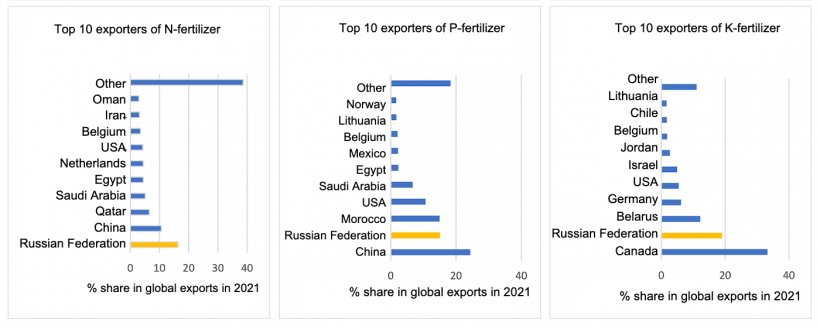The Russian Federation and Ukraine are among the most important producers of agricultural commodities in the world. Both countries play leading supply roles in global markets of foodstuffs and fertilizers, where exportable supplies are often concentrated in a handful of countries. This concentration could expose these markets to increased vulnerability to shocks and volatility.
The Russian Federation is a key exporter of fertilizers. In 2021, the Russian Federation stood as the world’s top exporter of nitrogen fertilizers and the second leading supplier of both potassic and phosphorous fertilizers.


Twenty-five countries rely on the Russian Federation for fertilizers with an import dependency of 30% or more for N, P, and K fertilizer. Many countries located in Eastern Europe and Central Asia have an import dependency of well over 50% on Russian fertilizers, for all three ingredients. Ukraine does not feature heavily as a dependent fertilizer exporter, with the exception of purchases by Benin and a handful of countries in the European Union.
With prices of fertilizers and other energy-intensive products rising as a consequence of the conflict, overall input prices are expected to experience a considerable boost. The higher prices of these inputs will first translate into higher production costs and eventually into higher food prices. They could also lead to lower input use levels, depressing yields and outputs in the 2022/23 crop season, and giving further upside risk to the state of global food security in the coming years.
March 14, 2022/ FAO.
https://www.fao.org





